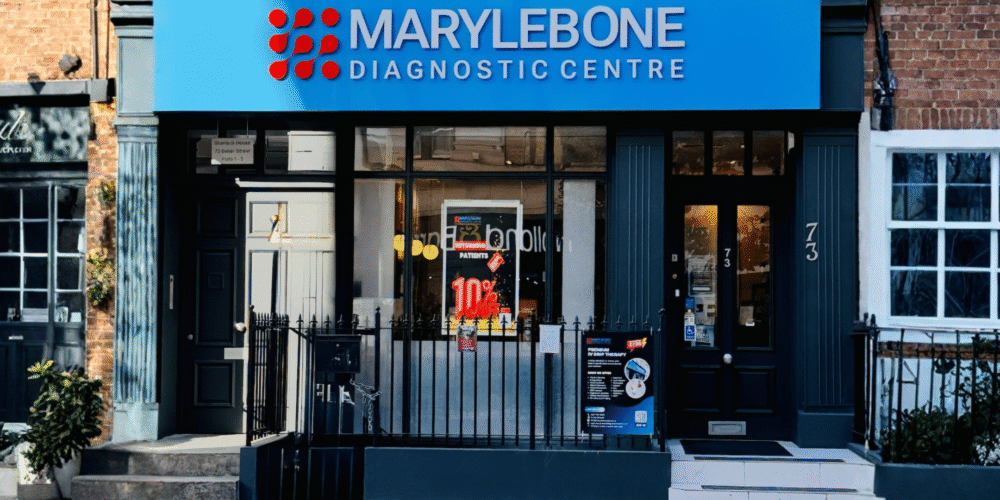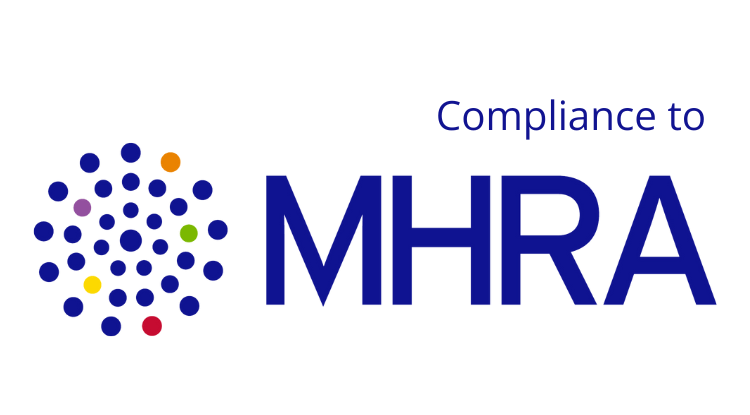
“‘Fat Jabs’ Are Not a Permanent Solution: Why Diagnostic Insight Matters – MDC’s Approach to Weight & Metabolic Health”
When Quick Fixes Let Us Down: The Reality Behind ‘Fat Jabs’
A recent Telegraph headline warned that “fat jabs are ‘not a quick fix for obesity’”, stressing that weight loss drugs may provide only a temporary reprieve in what is fundamentally a chronic metabolic condition. Telegraph
That caution comes from charities and clinicians who emphasise that obesity is rarely just about willpower or appetite-it’s a complex interaction of hormones, genetics, metabolism, lifestyle, environment, and more.
At Marylebone Diagnostic Centre (MDC), we wholeheartedly agree treatment without diagnosis risks running blind. In this post, let’s dig deeper into why “fat jabs” alone are not a silver bullet, what science says, and how MDC’s diagnostic services can support a more sustainable path to metabolic health.
What Are ‘Fat Jabs’ / Weight Loss Injections?
- These are typically GLP-1 (glucagon-like peptide-1) receptor agonists (e.g. semaglutide, liraglutide) or newer agents (e.g. tirzepatide), used to suppress appetite, slow gastric emptying, and enhance satiety.
- They were initially developed and approved for type 2 diabetes management, later adapted for obesity when trials showed significant weight loss in many patients.
- However, they are medications, not magic wands.
Why They Can Be “Temporary Relief”
Here are the key scientific and clinical reasons why weight loss injections often lose some of their effect over time, or result in weight regain when stopped:
- Homeostatic countermeasures: The body adapts to weight loss by lowering basal metabolic rate, increasing hunger hormones (e.g. ghrelin), and conserving energy.
- Set-point theory: Many researchers argue that people have a physiological “weight set point,” and strong interventions are required to shift it—and even then, the body will resist change.
- Drug tolerance / plateau effects: After an initial rapid weight loss, many patients hit a plateau where additional losses become harder.
- Cessation of therapy: When the drug is discontinued, appetite often rebounds, and weight can rapidly return unless lifestyle and metabolic changes have been solidified.
- Underlying metabolic or endocrine causes: If there are undiagnosed insulin resistance, thyroid issues, hormonal imbalances, or genetic predispositions, the injection treats symptoms, not root causes.
In fact, earlier Telegraph reporting shows that many patients regain lost pounds within 18 months if they stop or reduce their injectable therapy.
A More Holistic, Diagnostic-First Approach
To use fat jabs wisely (or consider them at all), diagnostics should guide your path. Here’s how MDC does this:
Comprehensive Metabolic & Hormonal Profiling
- Insulin, fasting glucose, HbA1c – to assess insulin resistance or prediabetes
- Thyroid function (TSH, FT4, FT3) – hypothyroidism can blunt weight loss
- Cortisol / adrenal screening – chronic stress can alter weight regulation
- Lipid panels, liver enzymes, kidney function – to monitor metabolic health
Body Composition & Basal Metabolic Rate (BMR) Estimation
Understanding fat mass vs lean mass helps tailor energy intake, exercise, and drug choice.
Appetite / Satiety Biomarkers & Genetic Testing
Exploring markers like ghrelin, leptin sensitivity, and even gene variants linked to obesity can inform whether someone is likely to respond well (or poorly) to weight loss injections.
Lifestyle & Behavioural Assessment
Mapping diet habits, activity levels, sleep, stress, and eating patterns-so that any pharmacological support doesn’t work in a vacuum.
How MDC’s Model Complements (Not Replaces) Fat Jabs
Rather than seeing injections vs diagnostics as opposing schools, MDC’s philosophy is “diagnose, then treat, then monitor.”
Benefits of combining diagnostic work with therapeutic support:
- Better patient selection: Not everyone benefits equally from injections-diagnostics help predict response and avoid wasted cost or risk.
- Dosing strategy guidance: Labs and metabolic data can inform the choice of agent, dose escalation, or addition of adjuncts (e.g. GLP-1 + SGLT-2, etc.).
- Monitoring safety: Injections can influence glucose, lipids, kidney/liver function, electrolytes—all of which we track.
- Sustainability planning: As medications are tapered or stopped, diagnostics tell us when the body is stable enough to maintain weight without pharmacologic crutches.
- Addressing comorbidities: Identifying & managing coexisting issues (e.g. PCOS, sleep apnoea, hypothyroid) that may hinder weight loss long-term.
Practical Guidance & Caution
- Never self-inject or buy from non-medical sources – these medicines are potent and should be prescribed and monitored by qualified clinicians.
- View fat jabs as tools, not cures – they assist a journey, rather than define it.
- Expect adaptation – plateaus are common. Be patient, varied in approach, and data driven.
- Use diagnostics often – periodic re-testing helps fine-tune therapy, identify new issues, and catch side effects early.
Start with Data, Not Hype
If you’re considering weight loss injections, begin with comprehensive diagnostics. At Marylebone Diagnostic Centre, we offer Metabolic Health Panels, Hormone & Thyroid Testing, and Body Composition Assessment-all in one centre in London, with fast turnaround and same-day consultations.
Book a metabolic assessment today at marylebonediagnosticcentre.com to discover your unique roadmap to sustainable weight and metabolic health.



















